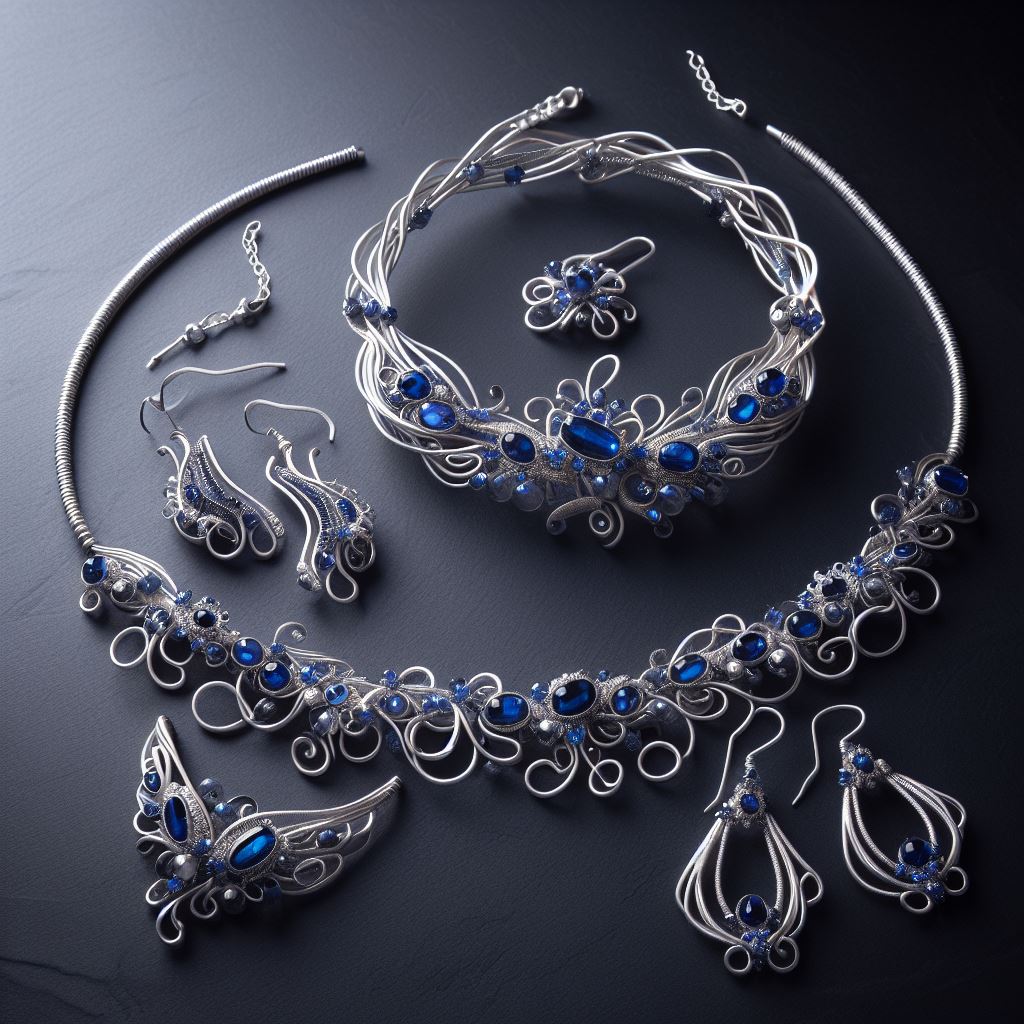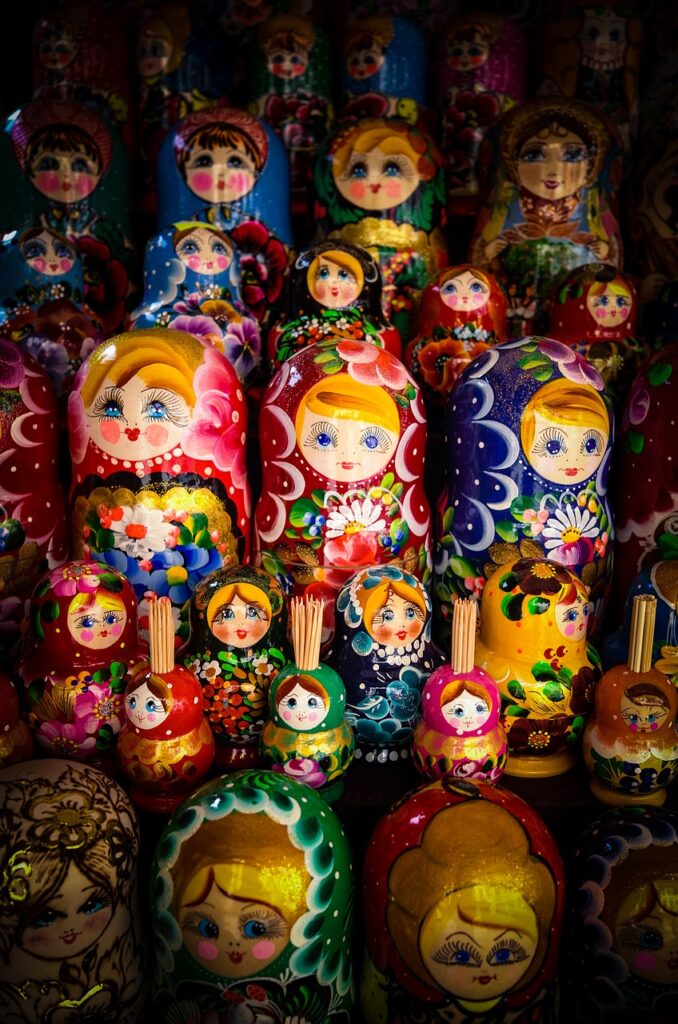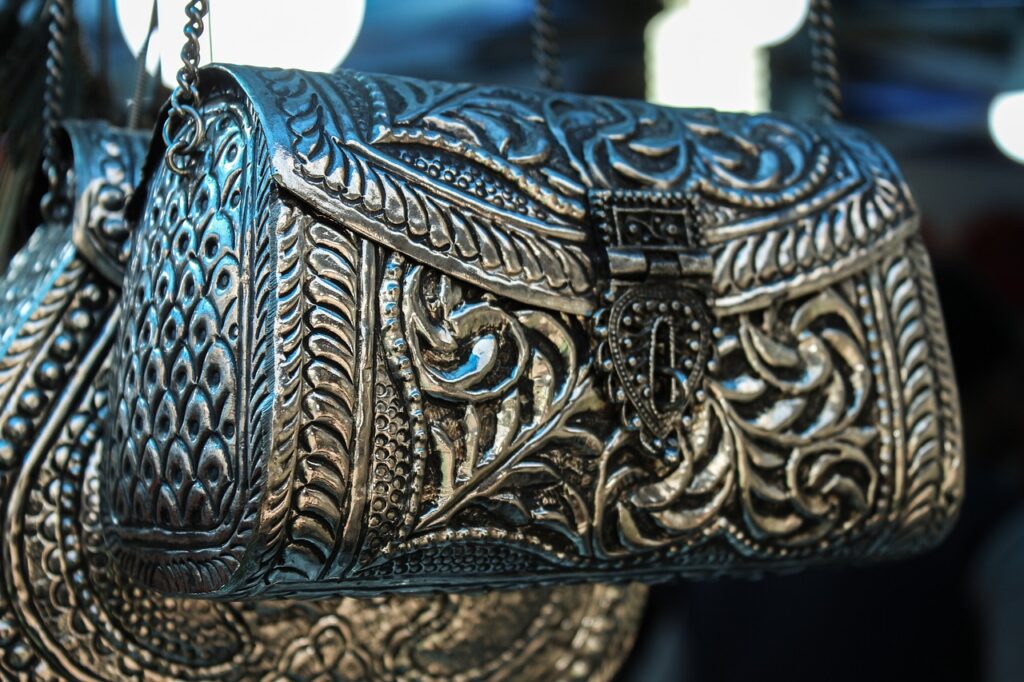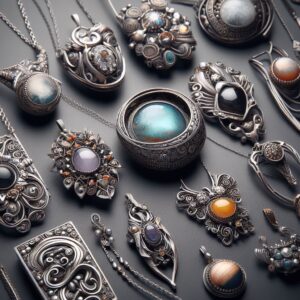
Imagine being able to wear a piece of history, a tangible connection to a century-old crafting tradition. Handmade jewelry offers just that, preserving a rich heritage and captivating the hearts of art enthusiasts worldwide. From the intricate craftsmanship to the use of traditional techniques, each piece tells a story of skilled artisans who have dedicated their lives to creating wearable art. In this article, we explore the fascinating world of handmade jewelry and uncover the secrets behind its ability to sustain a century-old crafting tradition.
Preservation of Traditional Techniques
The importance of preserving traditional craftsmanship
Preserving traditional techniques is crucial for the preservation of cultural heritage and the continuation of valuable craftsmanship. Traditional techniques have been passed down through generations, representing the expertise and knowledge of our ancestors. By actively preserving these techniques, we ensure that they are not lost to time and that future generations can appreciate and learn from them.
The role of handmade jewelry in keeping crafting traditions alive
Handmade jewelry plays a vital role in keeping crafting traditions alive. Craftsmen and women who create handmade jewelry utilize traditional techniques, such as metalwork, engravings, and intricate beadwork, passed down through generations. By practicing these techniques daily, they not only contribute to the preservation of traditional craftsmanship but also keep these techniques relevant and adaptable to contemporary trends and styles.
Challenges faced in maintaining traditional techniques
Maintaining traditional techniques in a rapidly changing world poses several challenges. Technological advancements, mass production, and the demand for fast fashion often overshadow the value of handmade jewelry and traditional craftsmanship. In addition, the lack of awareness and appreciation for the cultural and historical significance of traditional techniques can hinder their preservation. As a result, artisans face the challenge of finding a balance between tradition and innovation while navigating these changing dynamics.
The significance of passing down skills through generations
Passing down skills through generations is crucial in ensuring the continuity of traditional techniques. The apprenticeship model, where experienced artisans mentor and teach younger generations, plays a vital role in transferring knowledge and skills. By imparting their expertise, experienced artisans cultivate a sense of pride and commitment in the younger generation, instilling a passion for preserving these traditions. This practice not only keeps the craft alive but also strengthens the bonds within artisan communities and promotes a sense of cultural identity.
Artistic Expression and Individuality
Celebrating the uniqueness of handmade jewelry
Handmade jewelry celebrates the creativity and individuality of the artisans who craft them. Unlike mass-produced jewelry, each handmade piece is imbued with the artist’s unique style, perspective, and artistic expression. From intricate details to personalized touches, the distinctiveness of handmade jewelry allows individuals to express their personality and creativity through wearable art.
Artistic freedom and creative expression
Handmade jewelry offers artists the freedom to experiment and push the boundaries of their creativity. Unlike the constraints often imposed by mass production techniques, artists can explore different materials, colors, and techniques to create truly innovative and exceptional pieces. This artistic freedom allows artisans to express their unique perspectives and personalities, resulting in jewelry that tells captivating stories and evokes emotions.
Customization and personalization
One of the most significant advantages of handmade jewelry is the ability to customize and personalize each piece. Artisans can work closely with their clients, understanding their preferences, and translating their vision into a wearable masterpiece. Whether it’s engraving initials, incorporating birthstones, or designing a completely bespoke piece, handmade jewelry offers a level of personalization and sentimental value that is unmatched by mass-produced alternatives.
Distinctive styles and designs of handmade jewelry
Handmade jewelry is renowned for its distinctive styles and designs. Through the skilled hands of artisans, unique designs emerge that reflect their cultural heritage, inspiration, and artistic flair. These designs often incorporate traditional symbols, motifs, and techniques, allowing wearers to carry a piece of history and culture with them. From contemporary minimalist designs to opulent and intricate creations, the diverse range of handmade jewelry ensures that there is something to suit every individual’s taste and style.

Ethical and Sustainable Practices
The emphasis on ethical sourcing of materials
Handmade jewelry places a strong emphasis on ethical sourcing of materials. Many artisans consciously seek out materials that are sustainably and responsibly mined, ensuring that their craft aligns with their values. By supporting ethical suppliers, artisans ensure that their jewelry has a positive impact on both people and the environment.
Supporting fair trade and small-scale artisans
Handmade jewelry often supports fair trade practices, empowering small-scale artisans and communities. By purchasing directly from artisans or fair trade organizations, consumers can ensure that the makers receive fair compensation for their work. This helps uplift communities, providing them with sustainable livelihoods and economic stability.
Reducing environmental impact through sustainable practices
Handmade jewelry also prioritizes sustainable practices to minimize its environmental impact. Artisans often choose materials that are eco-friendly and responsibly sourced. They adopt sustainable production methods, such as recycling metals or using organic and natural materials. By consciously considering their environmental footprint, artisans contribute to the wider movement of sustainable living and eco-conscious consumerism.
Impact on local communities and economies
The production and sale of handmade jewelry have a significant impact on local communities and economies. By supporting local artisans, consumers help create opportunities for self-employment and economic growth. This, in turn, leads to the development of thriving artisan communities, where traditional techniques are valued, preserved, and passed on to future generations. The economic empowerment of these communities also contributes to the overall growth of the creative industry, fostering cultural diversity and innovation.
Value and Quality
Handmade jewelry as a mark of quality and value
Handmade jewelry is often regarded as a mark of quality and value. Crafted with meticulous attention to detail, each piece undergoes a lengthy and intricate process, ensuring the highest level of craftsmanship. Artisans infuse their expertise and passion into every stage of creation, resulting in jewelry that stands the test of time and retains its value for generations.
Attention to detail and craftsmanship
Handmade jewelry showcases the unmatched attention to detail and craftsmanship of artisans. Unlike mass-produced jewelry, every element of a handmade piece is carefully executed, from the precision of metalwork to the intricacy of gemstone settings. This meticulous craftsmanship elevates handmade jewelry to a level of artistry, creating pieces that exude beauty and captivate the wearer.
High-quality materials and their impact on longevity
Handmade jewelry often utilizes high-quality materials that contribute to its longevity. Artisans carefully select gemstones, metals, and other materials of exceptional quality, ensuring that each piece is durable and able to withstand the test of time. As a result, handmade jewelry becomes heirloom pieces, treasured by generations, and symbolizing the enduring nature of craft and heritage.
Durability and uniqueness as key selling points
The durability and uniqueness of handmade jewelry serve as key selling points. Unlike mass-produced jewelry that can often be easily replicated, each handmade piece possesses its own distinctive character and story. This individuality creates a sense of exclusivity and uniqueness, appealing to those who seek jewelry that stands apart from mainstream designs. Additionally, the quality and craftsmanship of handmade jewelry ensure that it remains in pristine condition for years, making it an investment worth its value.

Connection to Cultural Heritage
Exploring cultural storytelling through handmade jewelry
Handmade jewelry connects wearers to their cultural heritage by embodying cultural storytelling. Through the use of traditional symbols, motifs, and designs, artisans infuse jewelry with the rich history, traditions, and beliefs of their culture. These pieces become a tangible representation of cultural narratives, allowing wearers to celebrate and share their heritage with the world.
Traditional symbols and motifs in jewelry design
Handmade jewelry often incorporates traditional symbols and motifs that hold significant cultural meaning. These symbols serve as a visual language, conveying messages of spirituality, protection, love, and prosperity. By wearing and appreciating jewelry adorned with these symbols, individuals honor their cultural roots and keep the ancient wisdom alive.
Preserving ancestral techniques and designs
Handmade jewelry preserves ancestral techniques and designs, ensuring that they are not lost to time. Artisans who practice these techniques pass on the knowledge, skills, and craftsmanship acquired from their ancestors. By upholding ancestral techniques, artisans navigate the delicate balance between tradition and innovation, preserving the essence of their cultural heritage through their craft.
Jewelry as a reflection of cultural identity
Handmade jewelry serves as a reflection of cultural identity, allowing individuals to proudly showcase their heritage. By wearing jewelry inspired by their cultural traditions, individuals express their identity, beliefs, and values. It becomes a tangible link to their roots, regardless of physical distance or time, reminding them of who they are and where they come from.
Economic Empowerment
Supporting local artisans and craftsmanship
Handmade jewelry supports local artisans and promotes economic empowerment within communities. By purchasing directly from artisans, consumers contribute to the growth of artisan communities and support the sustainability of traditional craftsmanship. This fosters a sense of pride and economic independence, enabling artisans to continue their craft and improve their livelihoods.
Creating opportunities for self-employment
Handmade jewelry creates opportunities for self-employment, allowing individuals to pursue a fulfilling and sustainable livelihood. Artisans often work independently, free from the constraints of a corporate environment, and can showcase their creative talents while supporting themselves and their families. By embracing handmade jewelry, consumers play an essential role in creating these opportunities for artisans, allowing them to thrive and contribute to their local economies.
Overview of the economic impact of handmade jewelry
The economic impact of handmade jewelry extends beyond the individual artisans. The growth of the handmade jewelry industry contributes to the wider creative sector and the economy as a whole. From the production of raw materials to the marketing and sale of finished pieces, handmade jewelry stimulates multiple sectors, generating employment opportunities and economic growth.
Contributing to the growth of the creative industry
Handmade jewelry contributes to the overall growth of the creative industry. By valuing and supporting the craftsmanship and artistry of artisans, consumers play a vital role in fostering creativity, innovation, and cultural diversity. Just as handmade jewelry represents the coming together of traditional techniques and contemporary designs, it also represents the merging of creativity and commerce, creating a harmonious balance that fuels the growth of the creative industry.

Innovation and Contemporary Adaptation
The fusion of traditional techniques with modern trends
Handmade jewelry embraces innovation by merging traditional techniques with modern trends. Artisans continually adapt and evolve their craft, incorporating contemporary elements to create jewelry that appeals to current tastes and preferences. This fusion of tradition and modernity ensures that handmade jewelry remains relevant and exciting in a fast-paced, ever-changing industry.
Incorporating new materials and technology
Handmade jewelry incorporates new materials and technology to expand the horizons of the craft. Artisans experiment with innovative materials and techniques, embracing the opportunities afforded by technological advancements. This enables them to create jewelry that pushes the boundaries of creativity, introducing novel textures, finishes, and aesthetics.
Exploring alternative forms of jewelry making
Handmade jewelry explores alternative forms of jewelry making, breaking away from traditional notions and techniques. Artisans venture beyond conventional designs, experimenting with unconventional materials and approaches, such as sustainable and upcycled materials. This exploration opens up new avenues for self-expression and encourages consumers to embrace unique and unconventional pieces.
Maintaining relevance in a fast-paced industry
Handmade jewelry maintains relevance in a fast-paced industry by continuously adapting and reinventing itself. Artisans keenly observe trends, market demands, and consumer preferences, ensuring that their creations remain desirable and in sync with contemporary aesthetics. By staying attuned to the ever-changing landscape of the industry, handmade jewelry retains its appeal and captivates a diverse range of consumers.
Artisan Communities and Collaboration
Building cooperative networks and support systems
Artisan communities thrive on collaboration and the establishment of cooperative networks. By coming together, artisans can share resources, knowledge, and experiences, creating a support system that allows them to overcome challenges and grow together. This sense of community fosters a spirit of cooperation, rather than competition, contributing to the preservation of traditional techniques and the overall growth of artisan communities.
Preserving cultural knowledge through community involvement
Community involvement plays a crucial role in preserving cultural knowledge within artisan communities. Through cultural events, exhibitions, and workshops, artisans engage with their local communities, creating awareness and appreciation for their craft and cultural heritage. These interactions provide opportunities for knowledge transfer, not only from master artisans to apprentices but also from older generations to the wider community, ensuring the continuity of traditional techniques and the celebration of cultural identity.
Collaboration between artisans and designers
Collaboration between artisans and designers brings together diverse skill sets and perspectives, creating unique and innovative pieces. Designers provide fresh and conceptual ideas, while artisans contribute their specialized craftsmanship. This synergy results in jewelry that combines artistic vision with meticulous execution, appealing to a wider audience and pushing the boundaries of creativity.
Reviving dying crafts and promoting inclusivity
Handmade jewelry plays a significant role in reviving dying crafts and promoting inclusivity within artisan communities. By embracing and integrating traditional techniques that are at risk of being forgotten, artisans breathe new life into these crafts, ensuring their survival and relevance. This revival not only preserves cultural heritage but also encourages inclusivity within artisan communities by providing opportunities for artisans from different backgrounds and cultures to contribute their unique skills and perspectives.

Educational Initiatives and Apprenticeships
The role of educational programs in preserving craftsmanship
Educational programs play a vital role in preserving craftsmanship by imparting knowledge and skills to future generations. These programs provide structured learning environments, where individuals can acquire the necessary theoretical and practical foundations to become skilled artisans. By formalizing craft education, these initiatives ensure that traditional techniques are passed on effectively and remain accessible to all who are interested.
Apprenticeships as a means of passing on knowledge
Apprenticeships serve as an effective means of passing on knowledge and skills within artisan communities. Through hands-on experience and mentorship, apprentices learn from master artisans, absorbing their expertise and honing their craft. This one-on-one interaction fosters a deep sense of respect, tradition, and camaraderie, ensuring a seamless transfer of knowledge from one generation to the next.
Imparting jewelry-making skills to future generations
Imparting jewelry-making skills to future generations ensures the continuity and evolution of the craft. By nurturing young talent and instilling a passion for jewelry making, artisans secure the legacy of their craft. Educational initiatives and apprenticeships ensure that individuals are equipped with the necessary skills, encouraging them to pursue careers in handmade jewelry, thus guaranteeing the preservation of traditional techniques and enabling the craft to evolve and thrive.
Institutes and organizations promoting craft education
Numerous institutes and organizations are dedicated to promoting and preserving craft education. These institutions offer courses, workshops, and resources that cater to individuals interested in learning and practicing handmade jewelry. Through their efforts, they provide platforms for aspiring artisans, contribute to the growth of the creative industry, and foster a deeper appreciation for traditional craftsmanship.
Consumer Awareness and Demand
Increasing interest in handmade and sustainable products
Consumer awareness and demand for handmade and sustainable products have witnessed a significant surge in recent years. More individuals are seeking alternatives to mass-produced items, placing a premium on products that are handmade with care and consideration. This shift is driven by a growing concern for the environment, ethical sourcing, and a desire to support local artisans and communities.
Consumer preferences for unique and meaningful jewelry
Consumers increasingly prefer jewelry that is unique and has a personal connection, as opposed to mass-produced options. Handmade jewelry caters to this preference, offering pieces that speak to individuality, self-expression, and sentimental value. By choosing handmade jewelry, consumers embrace this desire for meaningful accessories that go beyond the surface, creating a deeper connection with their adornments.
The power of conscious consumerism
Conscious consumerism has the power to drive change and shape industries. By consciously choosing handmade jewelry, consumers demonstrate their commitment to supporting artisans, preserving traditional techniques, and fostering a sustainable and ethical industry. This collective effort has the potential to promote transformative change, encouraging other sectors to adopt more sustainable and socially responsible practices.
Promoting a shift from mass production to handmade
The increasing demand for handmade jewelry promotes a shift from mass production to a more artisanal approach. Consumers recognize the value, quality, and uniqueness that handmade jewelry offers, encouraging others to reconsider their choices and invest in sustainable and handmade options. This shift has far-reaching implications, not only for the handmade jewelry industry but for the broader global economy, fostering a more conscious and sustainable approach to consumption.
In conclusion, handmade jewelry is a testament to the preservation of traditional techniques, celebrating artistic expression, promoting ethical and sustainable practices, reflecting cultural heritage, empowering artisans and communities, fostering innovation and contemporary adaptation, and driving positive consumer awareness and demand. Through its diverse range of benefits and contributions, handmade jewelry continues to sustain century-old crafting traditions, ensuring the continuity of craftsmanship and cultural heritage for generations to come.


